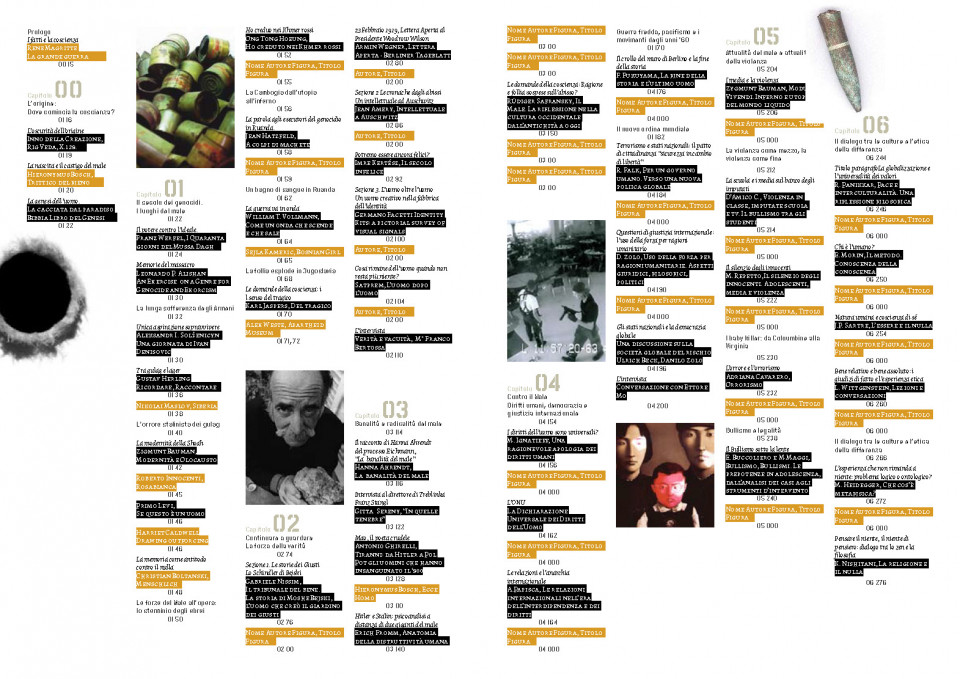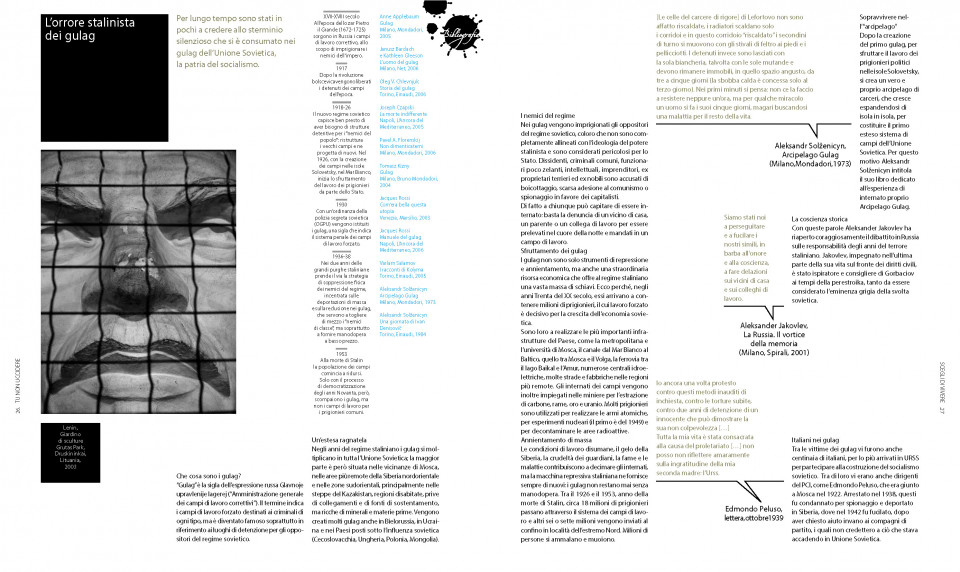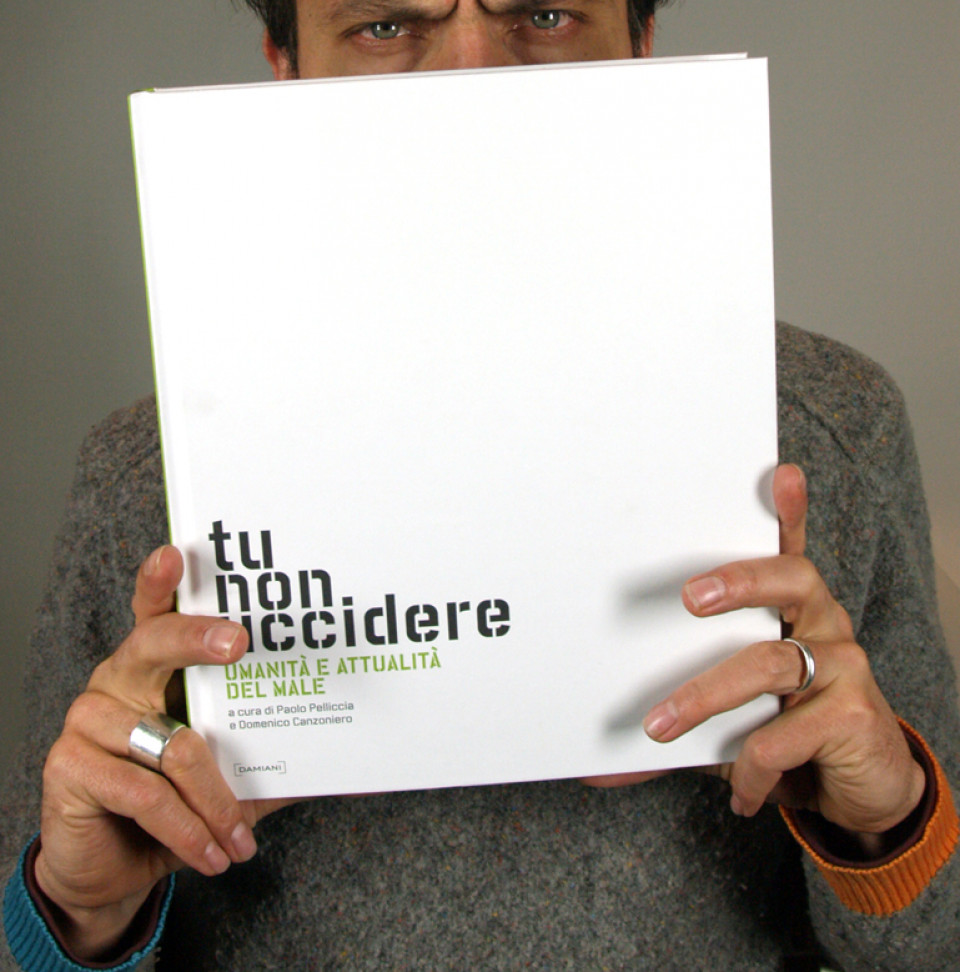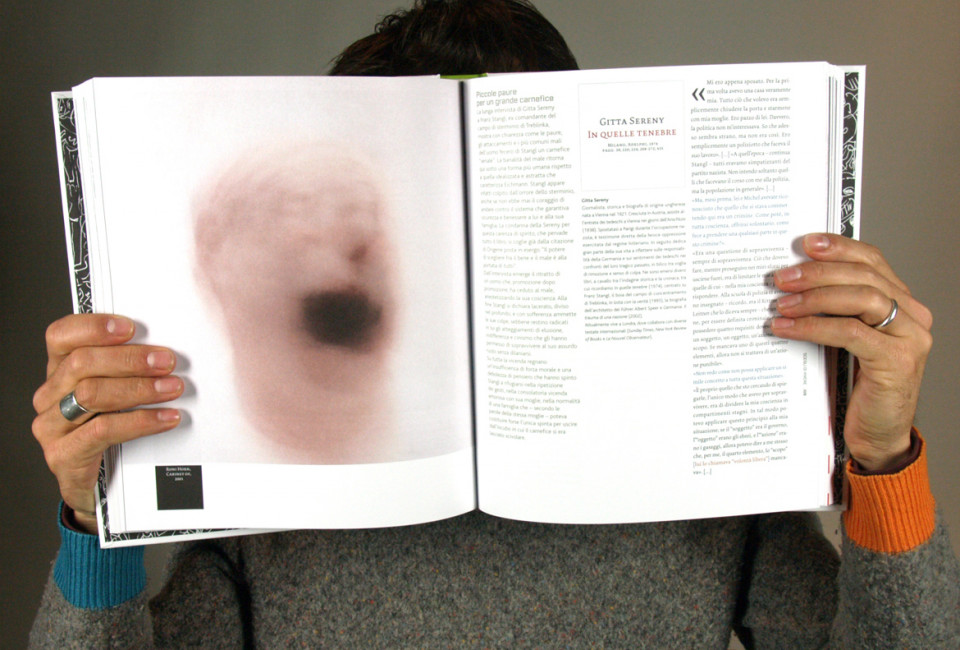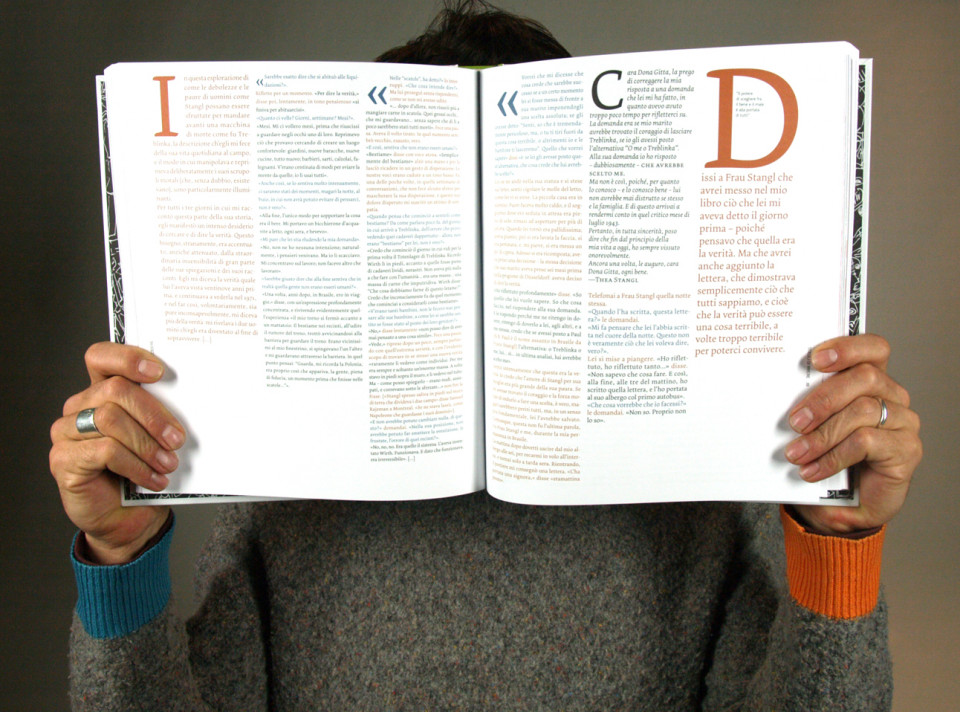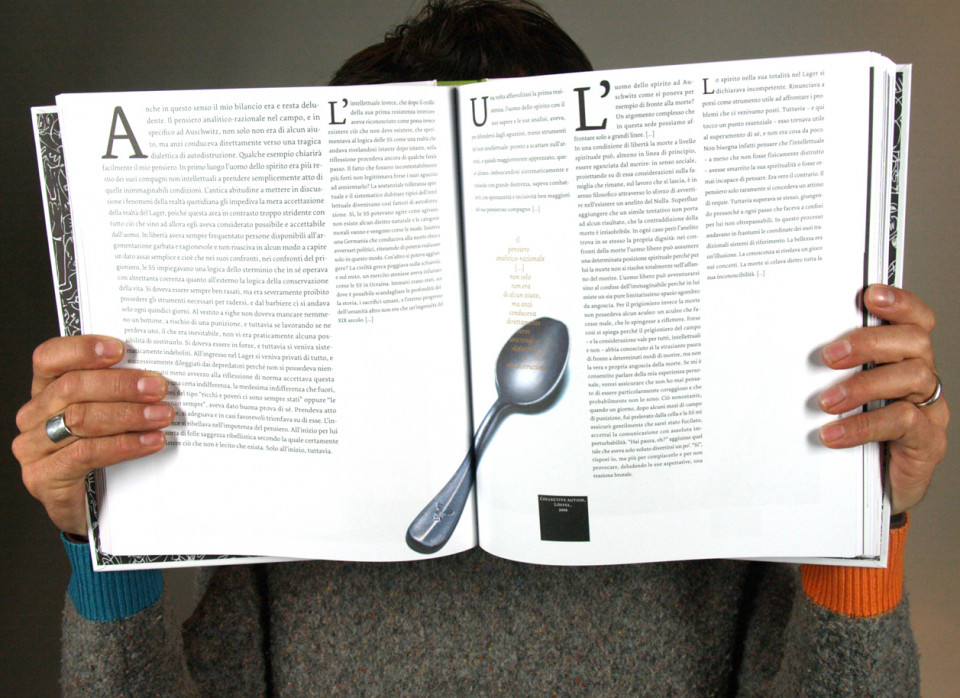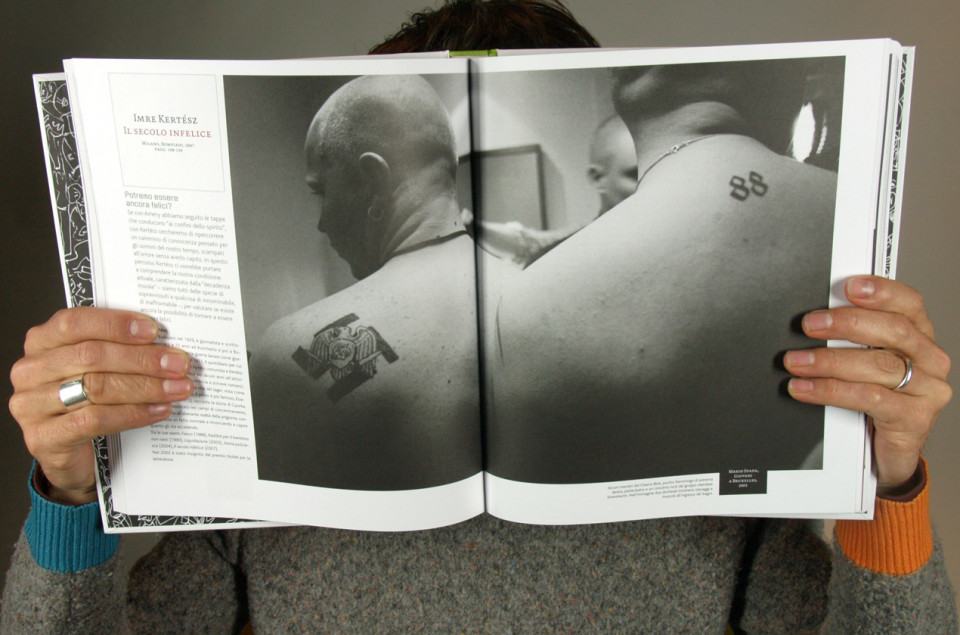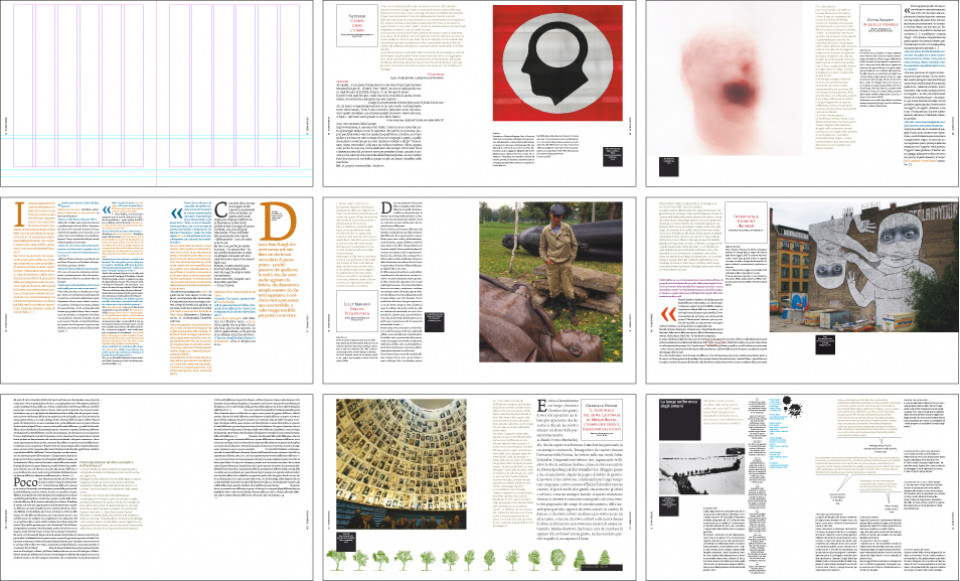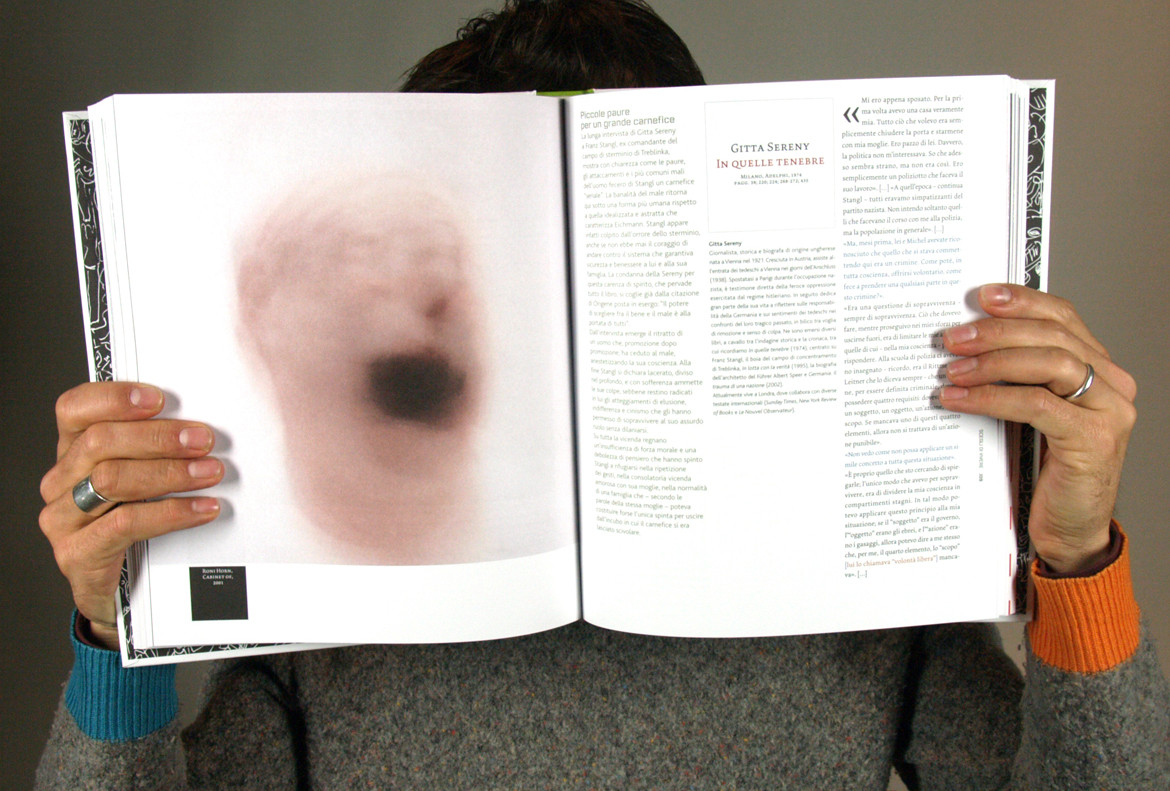Tu non uccidere [Do not Kill]
An anthology in which graphics, iconography and contents were created together to offer new routes through reading.
Tu non uccidere [Do not kill], published by Damiani, arose from a topical issue, in the form of a severe case of bullying that took place in Turin in 2007, which led us to ask ourselves some serious questions on how to tackle this matter in schools. From our questions, and from a discussion with Paolo Pelliccia, the idea emerged to approach the Italian Ministry of Education with the proposal of a selection of works to provide support and pointers for reflection for teachers and students.
We invested over a year's work in this project, in which we believed passionately: an anthology that seeks to dig deep into the innermost corners of our souls and to reflect on the humanity and topicality of evil.
The result is an interdisciplinary journey bursting with imagery and graphic and visual material to spark conversation and reflection. Woven into a complex and multi-layered fabric, but full of points of access and cross-references, the entire volume centres on the fundamental notion of humanity and the exploration of the sense of evil in human nature.
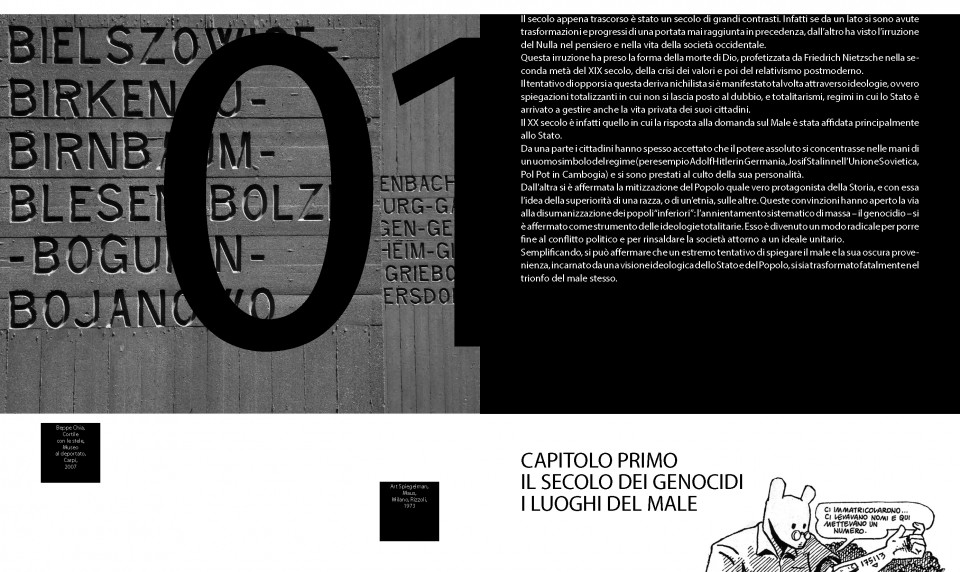
A book intended to be browsed, read or visually savoured, but to always leave a mark and trigger questions. A book that is also a cultural experiment, to be read from cover to cover or explored in fortuitous leaps like hypertext. A book in which to make brief forays, descending into the life of a prisoner at Auschwitz with Jean Amery or into 21st-century Africa with newspaper reports from La Repubblica.
The experimental nature of this project is evident in the ways the book continued to live after it had hit the shelves. The editors then launched a series of educational initiatives in high schools throughout Italy, which were supported and stimulated by the book, and ensured that the issues it tackled continued to resonate between teachers and students.
